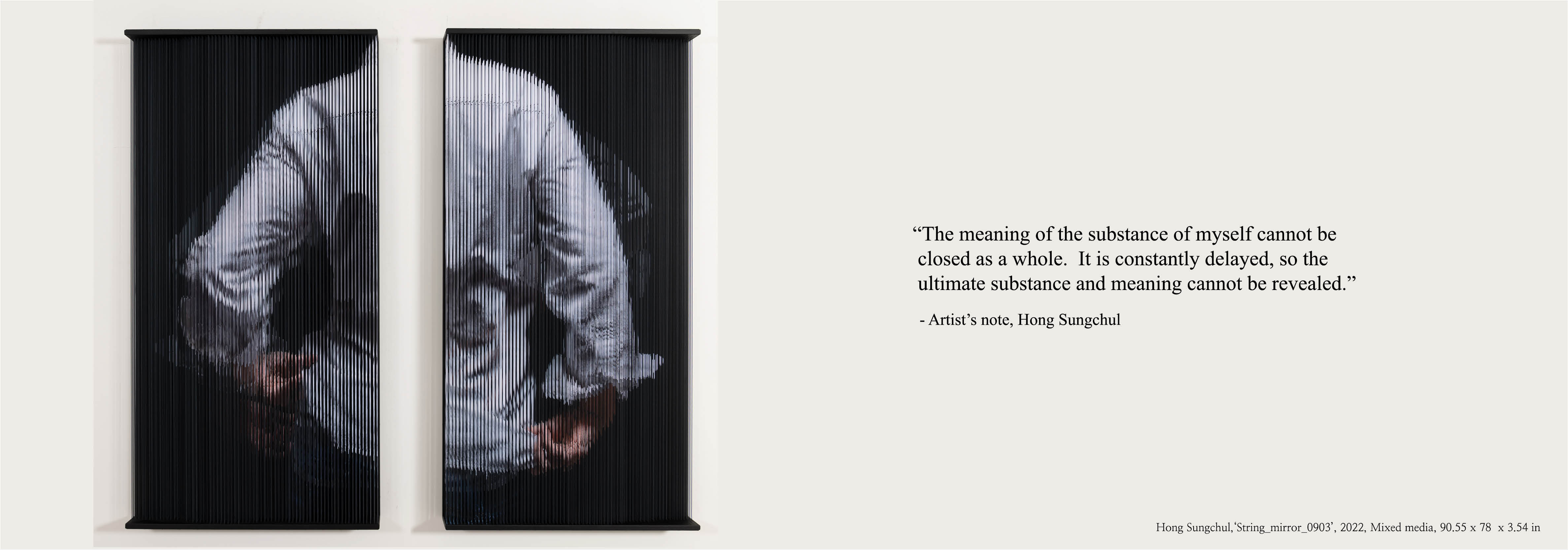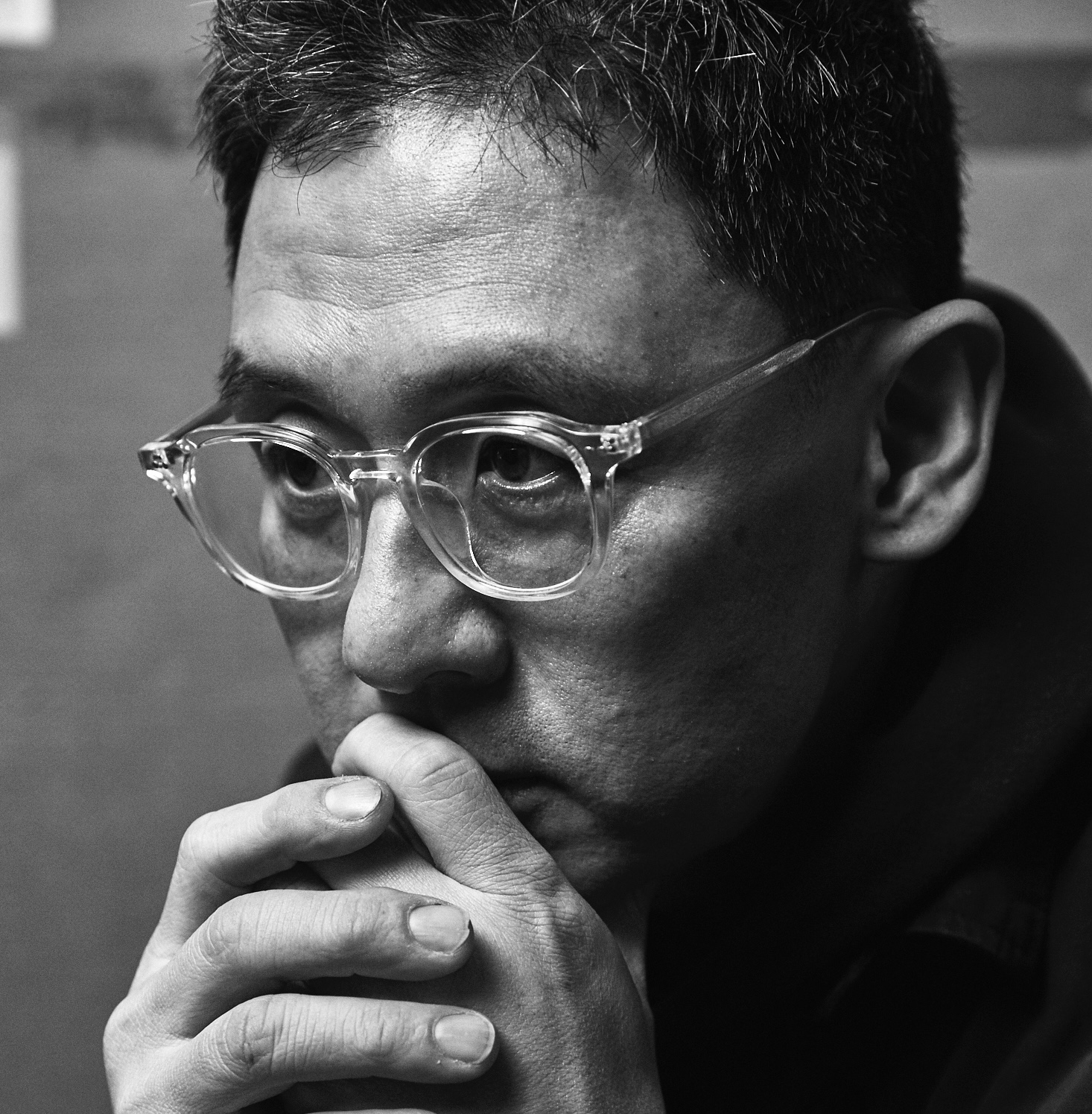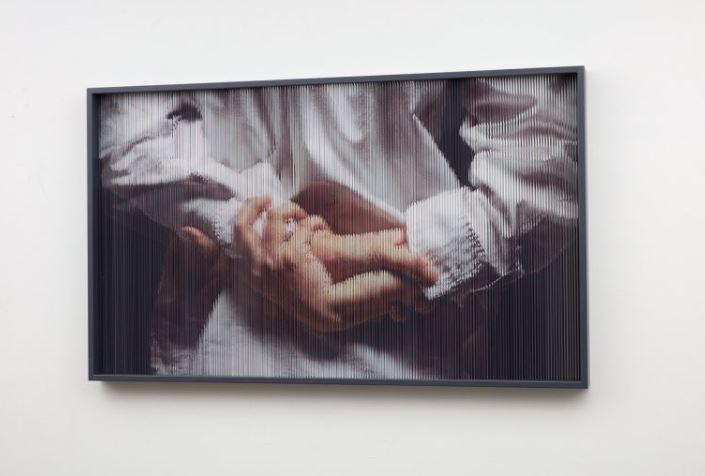Works of Sungchul Hong and Joohyun Kim have its volume, but the line is a main element in the works. Lines with a minimum amount of mass are more like a painting element and leave its trace in the actual space more sharply than sculpture. Hong makes mirror which reflects the body using parallel lines of cylindrical strings and Kim creates distorted space by regularly weaving copper wires. Lines of two artists are complex and diverse enough to develop into a different dimension, but the way to create the artwork is strictly restrained. Lines from one point to another bring about faces and faces engender three-dimensional space or illusionary and distorted structures.
The starting point of Hong’s work is regularity of parallel. The dots on Kim’s work is applied to theory of numerical sequence, which expands indefinitely outwardly. The center of the power is not fixed. Complexity expanding from points to lines and to another dimension shed light on an ego and universe providing unpredictable visual experience. Hong put the subtitle of “solid but fluid” to this exhibition in order to imply equivocal meaning of string mirrors, which is both hard-surfaced mirror and flexible elastic strings. This can be physical flexibility where visitors pass through the artwork. It also can be mental flexibility of ego reflected on imaginative mirror surface. He turns photograph into three-dimension by printing body image out on elastic bands aligned in parallel in various size of steel frames. You will find a on three meter high column as soon as you walk into an exhibition hall, which shows an image of holding hands. in front of it is a big eye looking at this column. Hands and other body parts are displayed on separate frames. Hands which appear most often in his works seem to reach out visitors and hold their hands.
Visitors temp to touch them, which is characteristic of Hong’s work. installed in a dim space is an interactive art piece, which reflects viewers onto screen made of beaded strings. A vision on the three-dimensional screen has a similar visual effect with strings mirror, but the image disappears unless audiences secure a certain distance. Hong’s various ‘mirror’ reflects the object and helps it transfer dimensionally. It tells that the mirror is not a simple mechanical reflection, but a realm reflecting human imagination. Hong’s mirror does not fulfill its original purpose of mirror which integrates divided bodies. Rather, it takes them into the disaggregated status. It is possible thanks to spaces between strings which disturb imaginative integration. Those spaces do not hide the fact that image in the mirror is a structure only in its own fantasy. In the mirror stage of Jacques Lacan, irreclaimable gap between reality and reflection produces dissolution or isolation of the subject.
When the fact that perpetuality and stability of an ego in the mirror is a byproduct of illusionary fantasy is unveiled, audiences confirm the lack through their movement. This reminds me of Borges Fable. According to the myth of Mirror People quoted in Julian Pefanis, the world of mirror and the world of men were not disconnected like now. Two kingdoms lived in peace and harmony and people from two worlds can travel across the mirror. However, two worlds had a war and mirror people who lost a war should have lived in the mirror forever repeating every movement of men. People in the mirror became a slave of the human world, but they had a hope that they break the spell and tear down the barrier of mirror. Pefanis said that the message of this myth is harmony in the difference. Changeable mirror of Hong rejects oppressive destiny of repetition and transforms the format. Challenging to the norm where the body is restricted by the false concept of “the subject of spatial unity” is movement to the other side of mirror. Hong’s work tries to escape from “Glass prison of narcissistic illusion” by transforming rigid structure of mirror into flexible elasticity of strings.






















